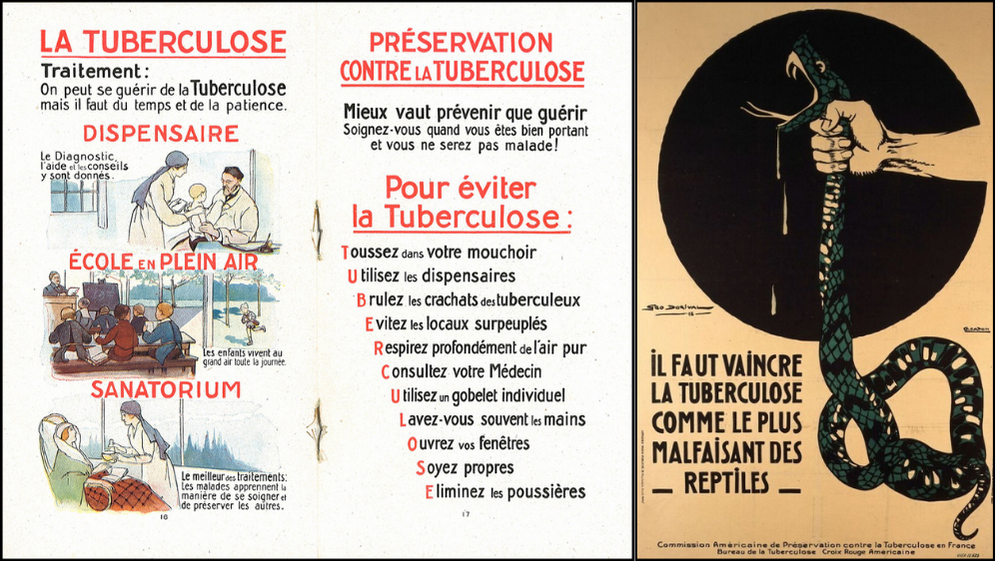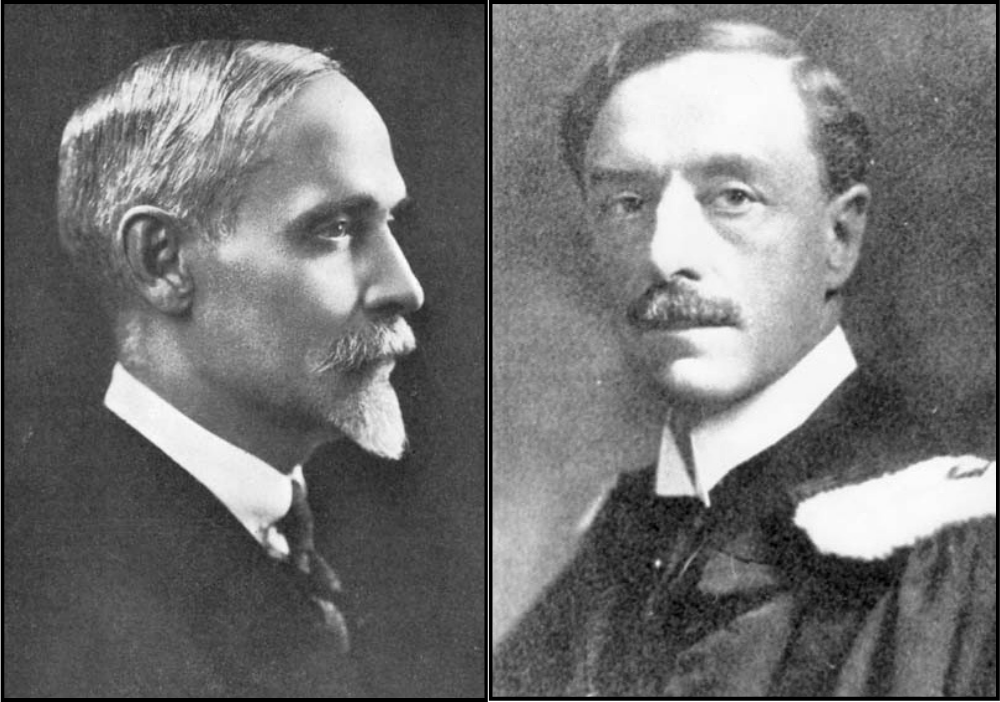The Fight Against Cancer
Many doctors believed that a public health campaign was necessary to successfully fight cancer. Towards the end of the 19th century, the implementation of vast outreach programs had drastically reduced the negative effects of several infectious diseases such as diphtheria, smallpox, typhoid fever or tuberculosis.

(Left) Brochure for tuberculosis prevention, 1924 (Right) Poster campaign against tuberculosis, 1918
Much like in Europe, the United States and English Canada, the success of these campaigns helped French Canadian doctors play a more prominent political role. In Québec, the smallpox epidemic of 1885 allowed Doctor Emmanuel-Persillier Lachapelle and a few of his colleagues to convince the Government to create the Conseil d’hygiène de la province de Québec (Provincial Board of Health of Québec). This organization was officially founded in 1888. Between 1917 and 1921, government spending for public health in Québec quadrupled. And so, at the turn of the 20th century, doctors were gradually seeing their expertise rewarded by more state funding and recognition.

(Left) Regulations of the Provincial Board of Health for the direction of local boards of the health of the province of Québec, 1889 (Right) Dr. E. P. Lachapelle, 1880
To ensure their trade was taken seriously, Québec doctors worked on improving medical training in universities. The Université de Montréal hired several professors who had attended major European universities, which contributed to the credibility and development of science education. In this context, all that was missing was someone to convince the Québec Government to invest in radium.


